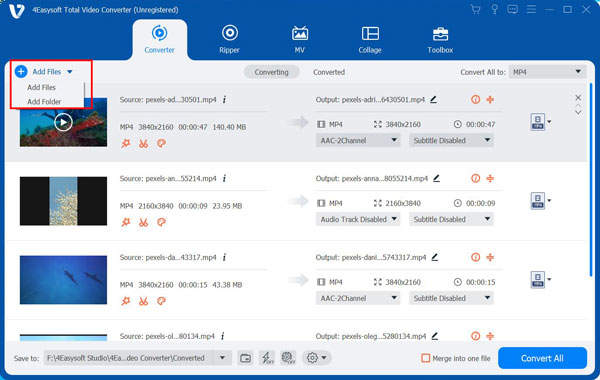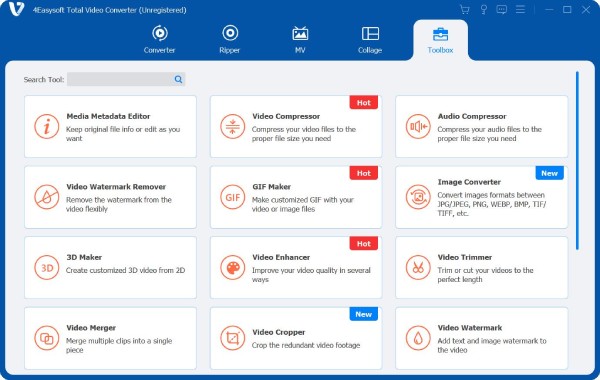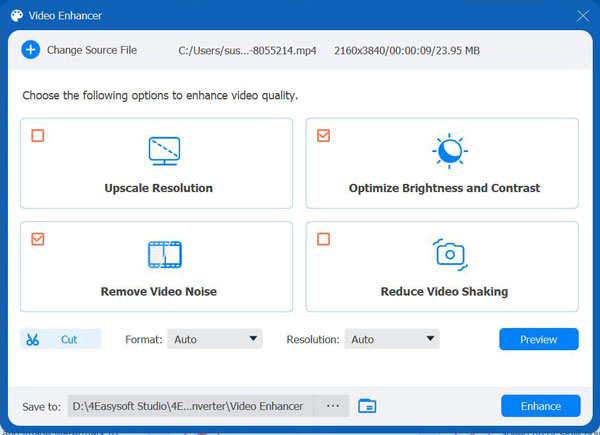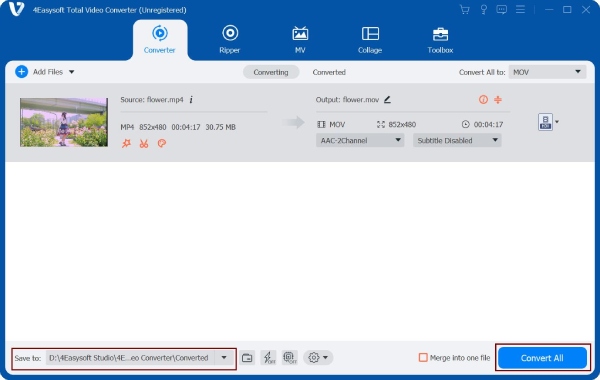Convert, edit, and compress videos/audios in 1000+ formats with high quality.
Video of White Noise: Causes, Prevention, and Fixes
Video of white noise is a common issue that many creators face, often showing up as grainy static, flickering pixels, or visual distortion—especially in low-light footage. While it might seem like a minor distraction, this visual noise can significantly impact the overall quality and professionalism of your content. Understanding what causes white noise, from low light conditions and high ISO settings to sensor limitations and compression, is the first step in dealing with it effectively. In this article, we’ll break down the key reasons white noise appears in your videos and guide you through practical solutions to prevent and fix it—whether you're shooting on a smartphone or a high-end camera. That’s white noise, and while it might look like harmless static, it can make your video appear low-quality and unprofessional. The good news? You can prevent most of it before hitting record, and even clean it up afterward if it sneaks in. In this guide, we’ll break down what white noise in video really is, why it happens, how to avoid it while filming, and the best tools to make it disappear for good.
Guide List
Part 1: What Is White Noise? Why Cause It When Recording? Part 2: Useful Tips to Reduce White Noise in Video When Recording Part 3: Best Way to Remove White Noise in Video After RecordingPart 1: What Is White Noise? Why Cause It When Recording?
If you've ever recorded a video and noticed those weird little flickering dots or grainy textures—especially in darker scenes—you've run into what's called white noise. It's a super common issue, and don’t worry, it happens to everyone, whether you're filming with a phone or a fancy camera. White noise is just visual static that shows up when your camera struggles to capture enough light or detail. So, let’s break down what causes it in the simplest way possible:
Tips for Understanding White Noise and Its Causes
1. Think of it like TV static – White noise in video is basically visual static or grain that shows up when your camera struggles to capture enough clean detail.
2. Low light is the main culprit – The darker the scene, the harder your camera works, and the more noise appears.
3. ISO settings matter – High ISO can brighten your shot but also boosts noise levels.
4. Sensor size plays a big role – Larger sensors capture more light, reducing the chance of visible noise.
5. Compression can make it worse – When a video is heavily compressed, tiny details get lost, and noise stands out more.
6. Even good cameras aren’t perfect – All sensors create some noise, especially during long recordings or in hot conditions.
Part 2: Useful Tips to Reduce White Noise in Video When Recording
Nobody wants their videos to look grainy or full of static, right? The good news is that you can actually stop most of that annoying white noise before you even hit the record button. With just a few simple tweaks to your setup and settings, you can capture cleaner, sharper footage—even with basic gear. Here’s how to get white noise out of video:
Tips to Reduce White Noise While Recording
1. Use plenty of light – Good lighting helps your camera capture more detail without boosting ISO.
2. Keep ISO low – Lower ISO settings reduce digital grain in your footage.
3. Use a tripod – Stability prevents motion blur, which can make noise more noticeable.
4. Clean your lens – Dust or smudges can soften your image and make noise appear worse.
5. Avoid digital zoom – It magnifies pixels and makes grain more obvious.
6. Use better sensors if possible – Cameras or phones with larger sensors handle low light much better.
Part 3: Best Way to Remove White Noise in Video After Recording 4Easysoft Total Video Converter
If you’ve already recorded your footage and noticed it’s covered in that distracting grain or static, don’t worry—you can still fix it. One of the easiest tools to use is 4Easysoft Total Video Converter. While it’s best known for converting file formats, it also comes with a Video Enhancer feature that can smooth out noise and make your video look more professional in just a few clicks. All you need to do is load your video, open the Video Enhancer from the Toolbox, tick the Remove Video Noise option, preview your changes, and export the improved version. It’s fast, beginner-friendly, and gives you a cleaner final result without complicated settings. Now learn how to get rid of white noise when recording video.

Video Noise Removal – Smooths out unwanted grain, static, and flicker from your footage.
Beginner-Friendly Interface – Simple, intuitive layout that makes noise removal easy for all skill levels.
High-Quality Output – Maintains crisp details and supports HD, 4K, and multiple format exports.
Batch Processing – Edit and clean multiple videos at once to save time.
Multi-Format Conversion – Converts videos to a wide range of formats without sacrificing quality.
100% Secure
100% Secure
Step 1Launch and register 4Easysoft Total Video Converter, then click "Add Files" or drag your videos into the program.

Step 2Go to the "Toolbox" tab to access over 20 helpful tools, including compress videos, adjust speed, enhance quality, convert images, and more.

Step 3Open "Video Enhancer" to boost your video with AI. You can choose the "remove video noise" option to remove noise from videos remove noise from videos easily.

Step 4Pick where to save your file, click "Convert All", and you're done!

Part 4: Different Types of Video Noise and How to Spot Them
Ever watched your footage back and thought, “Hmm… something looks a bit… grainy?” Well, that’s video noise sneaking into your shots! It’s not always obvious at first, but once you know what to look for, you’ll spot it right away. Here are the main types you might encounter—plus how to tell them apart so you can take actions and get rid of white noise in video before it ruins your masterpiece.
• Luminance Noise (Grainy Texture) – Looks like tiny dots or grain scattered across your footage, especially in darker areas.
• Chroma Noise (Colored Speckles) – Those random green, red, or blue flecks that appear where they shouldn’t.
• Banding – Strange stripes or blocks of color, often in skies or plain backgrounds.
• Artifact Noise – Weird blotches or distortion that pop up after heavy compression.
If you’ve ever come across a video of white noise while reviewing your clips, chances are one of these culprits is to blame. The good news? Now you know what you’re dealing with, you can tackle it head-on in editing. You can also pay attention to how to reduce background noise while recording.
Conclusion
Dealing with white noise in video can be frustrating, but with the right knowledge and tools, it’s easy to take control of your footage. From understanding what causes it to using smart filming techniques and powerful editing tools, you're now equipped to capture clearer, more professional-looking videos. Among all the solutions out there, 4Easysoft Total Video Converter stands out as the best choice—thanks to its simple interface and effective noise reduction feature. If you’re looking for an all-in-one way to get rid of white noise in video, this tool makes the job fast, easy, and beginner-friendly
100% Secure
100% Secure


